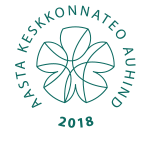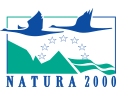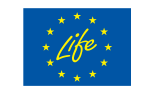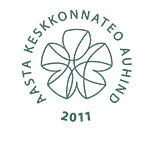|
Viidumäe Suurissoo after restoration |
Suurissoo spring-fen after restoration of the natural water regime |
One of the main threatening factors for the springs and fens are the amelioration sytems. One of the bigest ditches was closed in October, 2016 and the natural water regime was restored. Drone video, Viidumäe, Suurissoo, Nov 2016 |
Viidumäe Nature Reserve Surface area (ha): 2597 NATURA 2000 Code: EE0040493 Viidumäe Nature Reserve (KLO1000438) was formed in 1957. According to national legislation (Nature Protection Act) the Viiduma area is protected also according to the adopted protection rules (latest version May 2007). According to the protection rules people are allowed to enter the protected area if they stay on the two prepared and marked hiking trails and in the Rauna observation tower. The main purpose of the area is to protect rare species, communities and habitats, but also the diversity of all the nature in that territory. The landscape structure has formed after the ice-age and the altitude is now 59 m over sea-level. Most of the area is covered by forest biotopes (85%). 10% from the area is under bogs and alkaline fens with its various species. Main Habitat Directive Annex I habitats in the area are: *7220 – petrifying springs; 6410 - Molinia meadows on calcareous, peaty or clayey-silt-laden soils (Molinion caeruleae); *6270 – Fennoscandian lowland species-rich dry to mesic grasslands; *6530 – Fennoscandian wooded meadows; *7210 – calcareous fens with Cladium mariscus and species of the Caricion davallianae; 7140 – transition mires and quaking bogs; *91D0 – bog woodland; *9080 – Fennoscandian deciduous swamp woods; 7230 – alkaline fens; 7160 – Fennoscandian mineral-rich springs and springfens. Habitats Directive Annex II species: Rhinanthus rumelicus subsp. osiliensis, Cypripedium calceolus, Liparis loeselii, Hamatocaulis vernicosus, Euphydryas aurinia, Euphydryas maturna. Viidumäe is known as internationally important botanical area where following rare species are represented (most of them are related to alkaline fens biotopes): Cypripedium calceolus, Liparis loeselii, Equisetum x trachyodon, Dactylorhiza sambucina, Asplenium trichomanes, Taxus baccata, Sorbus rupicola, Lathyrus niger, Oxytropis pilosa, Trifolium alpestre, Vicia cassubica, Vicia lathyroides, Vicia tenuifolia, Hedera helix, Scabiosa columbaria, Vincetoxicum hirundinaria, Rhinanthus osiliensis, Pinguicula alpina, Corydalis intermedia, Cardamine hirsuta, Hypericum montanum, Juncus subnodulosus, Cephalanthera longifolia, Cephalanthera rubra, Dactylorhiza baltica, Dactylorhiza russowii, Gymnadenia odoratissima, Ophrys insectifera, Orchis mascula, Carex ligerica, Cladium mariscus, Schoenus nigricans, Bromopsis benekenii, Festuca altissima, Andreaea rupestris. Viidumäe is also important bird area where are nesting Aegolius funereus, Caprimulgus europeaus, Dryocopus martius, Grus grus, Haliaeetus albicilla, Lanius collurio, Picus canus, Sylvia nisoria, Tetrao tetrix, Porzana porzana, Columba oenas. Detected migratory species Coracius carrulus, Falco columbarius. Other species with conservation concern: Rana arvalis, Eptesicus nilssoni, Pleucotus auritius, Eptesicus nilssoni. The project site where concrete conservation activities are planned is in an area of 1490 ha. In total 42 petrifying spring habitats has been determined (in 1998). The water of the springs is related to Silur groundwater layer. Most of the springs are with small outflow rate (0,1 – 1,0 l/s; biggest outflow is 10 l/s). Chemically the water is calcareous with pH 8, HCO3-SO4-Ca-Mg. The close surrounding areas of the springs are important habitats for various rare plant species. Viidumäe was chosen as project site because of its international importance as natural area of ecological, floristic and faunistic interest. The density of petrifying spring habitats in the area is very high (probably the highest in Northern Europe). In the project site (directly targeted area is about 1490 ha) many valuable habitats are represented: *7220 – petrifying springs; 6410 - Molinia meadows on calcareous, peaty or clayey-silt-laden soils (Molinion caeruleae); *6270 – Fennoscandian lowland species-rich dry to mesic grasslands; *6530 – Fennoscandian wooded meadows; *7210 – calcareous fens with Cladium mariscus and species of the Caricion davallianae; 7140 – transition mires and quaking bogs; *91D0 – bog woodland; *9080 – Fennoscandian deciduous swamp woods; 7230 – alkaline fens; 7160 – Fennoscandian mineral-rich springs and springfens. These habitats are located in close neighbourhood of springs and will have impact to the spring catchment area. Thus, also these important habitats will have positive influence from project conservation activities. Viidumäe is internationally important area also in scientific scope of view. The diversity of rare plant species is high and many these habitats are related to petrifying spring habitats and spring fens. |
Viidumäe before restoration |
WILDLIFE ESTONIA
NGO Wildlife Estonia is established in 2000. Our aim is to protect rivers and other aquatic habitats. We care about the nature, biodiversity and fish in particular.
HABITATS
Springs, rivers and lakes are our common treasure. The more natural status they have the more precious they are.
COMPETENCE
Successful application and implementation of river restoration and fish population status improvement projects. Scientific ichthyology studies with traditional and modern bio-telemetric methods.
Disclaimer on LIFE projects.
LIFE projects are co-financed by the European Union LIFE program. Views and opinions expressed are however those of the author(s) only and do not necessarily reflect those of the European Union. The European Union can not be held responsible for them.
CONTACTS
Eesti Loodushoiu Keskus, registration 80124928,
Address: Veski 4, 51005 Tartu, ESTONIA
Send e-mail:
Contact phone (+372) 51 76886




